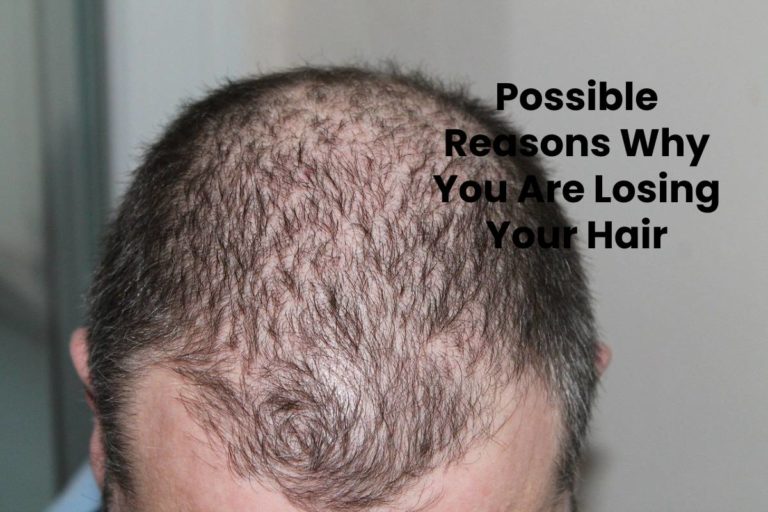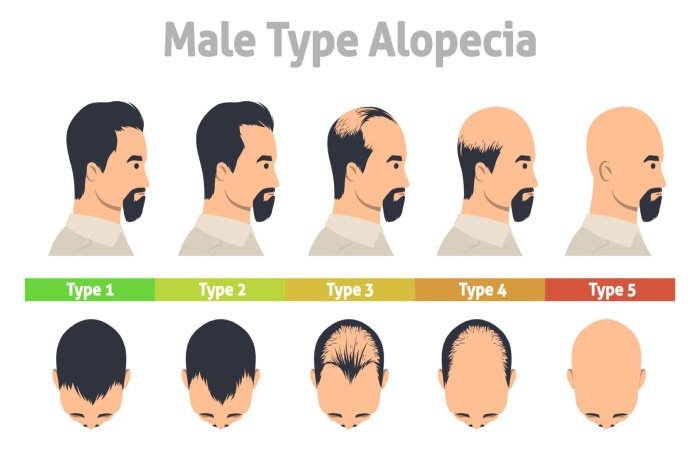So here’s something I wish someone had told me years ago: looking good doesn’t have to be complicated. Or expensive. Or time-consuming.
I spent my early twenties thinking I needed a 12-step Korean skincare routine, a personal trainer, and basically unlimited disposable income to look put-together. Spoiler alert: I was wrong. Dead wrong.
The truth? Most of us are just a few simple habits away from looking significantly better. And I’m not talking about those ridiculous beauty “hacks” where you’re supposed to mix honey with cinnamon and apply it during a full moon or whatever. I mean actual, practical things that work in the real world when you’re rushing to get ready for work and can barely remember if you locked the front door.
Let me share what I’ve learned through years of trial, error, and way too much money wasted on products that promised miracles and delivered… well, not miracles.
1. Your Teeth Situation is More Important Than You Think
I’m gonna start here because honestly? Your smile makes or breaks everything else you’ve got going on.
Last year I met up with this guy from a dating app. Nice profile, good conversation over text, seemed promising. Then we met in person and he smiled at me with what I can only describe as a full salad stuck in his teeth. Like, he’d clearly eaten lunch and just… never checked? I tried to focus on what he was saying but all I could think about was the spinach situation happening in his mouth.
Harsh? Maybe. But it’s reality. You can be wearing head-to-toe designer everything, but if your teeth look neglected, that’s all anyone’s gonna remember.
The Boring But Essential Stuff
You already know you’re supposed to brush twice a day. But are you actually doing it? And I don’t mean that half-asleep 30-second scrub while you’re scrolling TikTok with your other hand. I mean two full minutes of actual brushing.
Flossing is where it gets real though. I know, I know – it’s annoying, sometimes it makes your gums bleed, and you’re tired at night. But think about it this way: all that food stuck between your teeth is basically throwing a party for bacteria. Those bacteria are having the time of their lives turning into plaque, which hardens into tartar, which leads to cavities and gum disease. Not exactly the vibe we’re going for.
Level Up Your Dental Game
Regular toothpaste works fine, don’t get me wrong. But if you want to actually invest in your teeth – and considering they’re supposed to last you a lifetime, you probably should – look into luxury toothpaste formulas. The ones with vitamins and minerals that actually strengthen your enamel instead of just cleaning the surface.
Yeah, they cost more. But think about what you spend on coffee in a month and suddenly $15 toothpaste doesn’t seem that wild.
And listen, if you’ve got kids who hate brushing their teeth (or if you’re fighting them every night about it), get them a sonic toothbrush designed for kids. Game changer. They’ll actually want to brush because it feels cool, and you get to stop playing tooth-brushing police. Just remember to stock up on replacement heads – those bristles wear out faster than you’d think.
2. Stop Treating Your Skin Like It’s Indestructible
I used to be one of those people who thought moisturizer was only for people with “dry skin.” Then I hit 27 and my face suddenly felt like parchment paper. Funny how that works.
Here’s what nobody tells you when you’re young: your skin is constantly losing moisture. Heating in winter, AC in summer, hot showers, just existing in the world – it’s all sucking moisture out of your skin. And if you’re not actively putting it back in? Your skin’s gonna show it.
The Moisturizing Truth
Get a body lotion you actually like using and use it every day. Not just when you remember. Not just when your skin is visibly dry and flaky. Every. Single. Day.
Best time? Right after you shower while your skin’s still a little damp. That’s when it absorbs best. Takes two minutes tops, and I promise you’ll notice the difference within a week. Your skin will be softer, smoother, and you won’t have that weird reptilian texture thing happening on your legs.
Your Face Deserves Better Than Whatever You’re Currently Doing
Look, I’m not saying you need a 10-step routine with products that cost more than your monthly utility bill. But your face needs more attention than your body because the skin there is way more delicate and everyone’s looking at it all day.
Three things minimum: cleanser, moisturizer, sunscreen. That’s it. Everything else is optional upgrades.
A good face wash shouldn’t make your skin feel tight and squeaky. That “squeaky clean” feeling? That’s actually your skin screaming because you’ve stripped away all its natural oils. You want clean but comfortable.
Add an exfoliator maybe twice a week. This gets rid of dead skin cells that make you look dull and tired. But – and this is crucial – it needs to be gentle. Those harsh scrubs with big chunks can actually damage your skin. Chemical exfoliants (stuff with AHAs or BHAs) are usually better, even though “chemical” sounds scary.
Sunscreen is Non-Negotiable (Yeah, Even for You)
Real talk: I used to skip sunscreen constantly. I had every excuse. “I’m just running errands.” “It’s winter.” “I have melanin, I’m good.” All wrong, all stupid in hindsight.
UV damage is cumulative, which means every time you skip sunscreen, you’re adding to your lifetime total. And it’s not just about avoiding skin cancer (though that’s obviously important). Sun damage is literally the number one cause of premature aging.
Those wrinkles? Sun damage. Dark spots? Sun damage. Loss of elasticity? You guessed it – sun damage.
And before someone in the back says “but I have dark skin, I don’t need it” – nope. While melanin does provide some natural protection, it’s not sunscreen. Skin cancer rates are lower in people with darker skin, but when it does happen, it’s often caught later and is more serious. Plus, sun damage still causes hyperpigmentation and aging.
Find a sunscreen that doesn’t leave a white cast, feels good on your skin, and works under makeup. They exist now, thank god. Wear it every day. Yes, even when it’s cloudy. Yes, even in winter. Yes, even if you work indoors (windows exist).
3. Color Theory Isn’t Just for Artists
This might sound weird, but the colors you wear can completely change how people perceive your appearance.
I figured this out by accident. Bought a coral top on sale one time, wore it to brunch, and got stopped THREE TIMES by people saying I looked amazing. Meanwhile, I had this sage green shirt I absolutely loved that made me look like I was recovering from the flu every single time I wore it.
Turns out there’s actual science behind this. Certain colors complement your specific skin tone, hair color, and eye color better than others. It’s called color theory, and while it can get complicated, the basic concept is simple: some colors make you glow, others make you look washed out.
Figure Out What Works for You
You probably already have some intuition about this. Think about the clothes in your closet that always get compliments versus the ones that just hang there collecting dust. Usually there’s a color pattern.
But here’s the thing: we’re terrible judges of our own appearance sometimes. My suggestion? Do a little experiment. Try on different colored shirts (or just hold colored fabrics up to your face) and take photos in natural light. You’ll notice some colors make your skin look brighter, your eyes pop, everything just looks more alive. Those are your colors.
Or just straight-up ask people you trust. Not your mom who thinks you look beautiful in everything. I mean friends who will be honest. “Does this color actually look good on me or are you just being nice?” Show them options side by side.
Build Your Wardrobe Strategically
Once you know your winning colors, start buying more stuff in those shades. If you look killer in jewel tones, embrace it. Build your wardrobe around it. If earth tones are your thing, go there.
This doesn’t mean you can never wear other colors. I’m not gonna show up at your house and cite you for a fashion violation. But knowing your best colors gives you a foolproof strategy for those days when you need to look your absolute best. Job interview? First date? Important presentation? Wear your power colors and you’re already ahead.
4. Let’s Talk About Teeth Whitening (Because We All Want It)
So you’re brushing and flossing religiously, but your teeth still aren’t that dazzling white you see in toothpaste commercials. Welcome to being a normal human.
Most people don’t have naturally bright white teeth. And years of coffee (guilty), tea (also guilty), red wine (definitely guilty), and just living life will dull your teeth over time. It’s just what happens.
What used to annoy me was seeing everyone in magazines and commercials with these impossibly white smiles, like their teeth were glowing. Made me feel like my normal teeth were somehow deficient. But here’s the secret: those smiles often aren’t natural. They’re either veneers, professional whitening, or just good old photoshop.
Your Options for Getting Whiter Teeth
Professional whitening at your dentist’s office is the nuclear option. It’s fast, it’s effective, and it’s expensive. We’re talking a few hundred bucks, sometimes more. But if you want dramatic results quickly, that’s your best bet.
At-home whitening kits are where most of us end up, and honestly? They work pretty well if you’re patient. There are strips, trays with gel, whitening pens, LED light systems – the market is flooded with options.
The key is being consistent and not expecting miracles overnight. These things work gradually. Follow the directions (don’t just make it up as you go), use them as often as recommended, and give it time. You will see results, just not in three days.
Fair warning though: if you already have sensitive teeth, whitening can temporarily make that worse. Maybe start with every-other-day use instead of daily, and grab some toothpaste for sensitive teeth. Your teeth might feel a bit zingy during treatment, but it shouldn’t be painful.
Keep Your Smile Bright
Once you’ve whitened your teeth, you’ve gotta maintain it. This doesn’t mean giving up coffee (let’s be realistic), but maybe rinse your mouth with water after you drink it. Use a straw for stuff that stains. Do a touch-up whitening treatment every few months.
A bright smile is genuinely attractive. It makes you look more approachable, more confident, more put-together. And considering how much you use your smile, investing in it makes total sense.
5. Sleep is the Cheapest Beauty Treatment You’re Probably Skipping
I used to brag about running on 4-5 hours of sleep like it was some kind of achievement. “I’ll sleep when I’m dead,” I’d say, chugging my fourth coffee of the day. Then I looked at photos from that period and realized I looked like death warmed over.
Getting enough sleep isn’t just about feeling rested. It straight-up changes how you look.
What Lack of Sleep Does to Your Face
When you’re sleep-deprived, you look it. Dark circles under your eyes. Dull, lackluster skin. A generally exhausted vibe that no amount of concealer can fully hide.
But it goes beyond just looking tired. Sleep is when your body does repair work. Your skin cells regenerate faster while you sleep. Collagen production ramps up. Your skin is literally healing and maintaining itself overnight. Cut that process short and you’re preventing your skin from looking its best.
Plus, when you’re well-rested, you naturally look more positive and energetic. You smile more. Your eyes look brighter. You just give off better energy. People respond to that.
Actually Getting Better Sleep
Aim for 7-9 hours a night. Not “I’ll catch up on weekends” – your body doesn’t work that way. Consistent sleep schedule is what matters.
Set up a bedtime routine. Go to bed around the same time each night. Put your phone down at least 30 minutes before bed (I know, it’s hard, but doomscrolling is murdering your sleep quality). Make your bedroom actually good for sleeping – dark, cool, comfortable.
Having trouble falling asleep? Try the basics: no caffeine after 2pm, exercise regularly (but not right before bed), maybe some magnesium supplements. If you’re really struggling, talk to a doctor. Sleep is too important to just accept that you’re bad at it.
6. Your Scalp Situation is Secretly Affecting Your Hair
Nobody talks about this enough, but your scalp health directly impacts how your hair looks. You can dump money into expensive hair products, but if your scalp is clogged up, your hair’s never gonna look as good as it could.
Think about it: your hair grows from follicles in your scalp. If those follicles are clogged with oil, dead skin cells, and product buildup, your hair literally can’t grow properly. It’s like trying to grow plants in compacted soil – they’ll struggle.
Plus, a gross scalp leads to issues like dandruff, itchiness, and that feeling where your hair never really feels clean even right after washing. Not fun.
The Scalp Scrub Solution
Get yourself an exfoliating scalp scrub and use it once a week or every other week. It removes all the gunk that regular shampooing leaves behind.
The first time you use one, prepare to be amazed. Your scalp will feel clean in a way it probably hasn’t in years. And your hair will look noticeably better – shinier, fuller, just healthier overall.
Don’t overdo it though. Once or twice a week is plenty. Too much exfoliation can irritate your scalp and make things worse. Massage it in gently, let it sit for a minute, then rinse really thoroughly.
Will this magically give you twice as much hair? No. You’re limited by the follicles you have genetically. But it ensures those follicles are working at their best, producing the healthiest hair they can. And healthy hair looks fuller and better than damaged, struggling hair.
7. Drink More Water (Yes, This Again, But Actually Do It)
I know, I know. Every wellness person on the planet tells you to drink more water. It’s become such a cliché that people roll their eyes at it. But here’s the thing: most of us still aren’t doing it.
Dehydrated skin looks rough. It emphasizes fine lines, looks dull, and just has this tired quality to it. When you’re properly hydrated, your skin plumps up from the inside. It’s literally the difference between a grape and a raisin.
Keep a water bottle with you everywhere. Set phone reminders if you need to. Aim for about eight glasses a day, more if you’re exercising or it’s hot out. And no, your morning coffee doesn’t count. Sorry.
8. Moving Your Body Shows on Your Face
Regular exercise increases blood flow, which means more oxygen and nutrients getting delivered to your skin cells. This gives you that natural glow that people spend hundreds of dollars trying to achieve with highlighters and serums.
Plus exercise reduces stress, and stress absolutely destroys your appearance. Breakouts, dull skin, premature aging – stress contributes to all of it.
You don’t need to become a CrossFit enthusiast. Even just walking 30 minutes most days makes a noticeable difference. Find something you don’t hate so you’ll actually keep doing it.
9. Eyebrows Are Doing More Work Than You Realize
Well-groomed eyebrows make such a massive difference in how polished you look. They frame your entire face. Good brows can even make you look younger, more awake, more put-together.
Whether you pluck, wax, thread, or get them done professionally, maintaining your brow shape matters. If you’re unsure what shape suits your face, invest in one professional shaping session and then just maintain that shape yourself going forward.
Sparse brows? Don’t suffer. There are amazing brow pencils, powders, and gels out there that can fill them in naturally. A little definition goes a seriously long way.
10. Your Nails Say More Than You Think
You don’t need an Instagram-worthy manicure, but your nails should at least look clean and maintained. Ragged cuticles and chipped polish scream “I’ve given up,” even if the rest of you looks great.
Keep your nails trimmed to a reasonable length. Push back your cuticles (don’t cut them unless absolutely necessary). Either keep them polished or at least buffed so they look intentional.
It’s such a small thing but makes you look way more put-together. Takes like 10 minutes a week.
11. Stand Up Straight (Seriously, Right Now)
Posture changes everything about how you look. Stand up straight right this second and feel how different your entire body looks and feels.
Good posture makes you look more confident, slimmer, taller, more attractive. It’s an instant transformation that costs nothing.
Bad posture from hunching over computers and phones all day doesn’t just make you look worse now – it’s creating long-term problems that will definitely affect your appearance down the line.
Practice throughout the day. Set reminders. It feels weird at first but becomes natural.
12. Find a Scent That Becomes You
This might sound minor, but having a signature scent is powerful. People remember how you smell. Make sure it’s a good memory.
Find a perfume, body wash, or lotion that you love and that makes you feel confident. It doesn’t have to be expensive – just something pleasant that becomes associated with you.
And obviously, basic hygiene comes first. No amount of cologne will cover up not showering. Take care of the basics, then add your signature scent on top.
13. Your Stress is Written All Over Your Face
Chronic stress ages you faster than almost anything. It disrupts your sleep, causes breakouts, creates tension lines in your face, and makes you look perpetually exhausted and worried.
Find ways to actually manage your stress. Meditation, exercise, therapy, hobbies – whatever helps you decompress. This isn’t just wellness-influencer nonsense. Taking care of your mental health is one of the most effective beauty treatments out there.
14. That Hairstyle From High School? Maybe It’s Time
The hairstyle you’ve had since you were 17 might need an update. Hair trends evolve, and more importantly, different styles suit different life stages.
Consult with a good stylist every few years. Sometimes just changing your part or adding some layers makes a huge difference. You don’t need to follow every trend, but a refresh can do wonders.
15. Consistency Beats Perfection Every Time
Here’s the real secret nobody wants to hear: doing basic maintenance consistently beats fancy treatments you do occasionally.
Daily teeth brushing beats sporadic whitening treatments. Daily sunscreen beats expensive anti-aging creams used inconsistently. Regular sleep beats under-eye creams.
Build simple routines you can actually maintain. Start small – add one habit at a time. Once it becomes automatic, add another. That’s how real transformation happens.
The Bigger Picture (Getting Real for a Second)
Look, all these beauty hacks are great and they genuinely work. But I’d be lying if I said they’re the whole story.
If you’re miserable, exhausted, stressed out, or not taking care of your mental health, it shows. You can have perfect skin, white teeth, and a closet full of your best colors, but if you’re unhappy, people will sense that too.
The most attractive thing about anyone is confidence and genuine happiness. When you feel good about yourself, when you’re comfortable in your own skin, when you’re taking care of yourself mentally and physically – that radiates outward in ways no product can replicate.
Make It Personal
Everyone’s different. What works for me might not work for you. The trick is figuring out what makes you feel confident and attractive, then building sustainable habits around that.
Start with the universal basics: dental care, skin care, sleep, water. Then customize based on your specific needs. Maybe your hair needs extra attention. Maybe skin is your main concern. Maybe you just need to prioritize sleep above everything else.
Only you know what will make the biggest difference for you. Listen to your body, pay attention to what actually works, and build from there.
The Patience Game
Most people fail because they expect instant results. They try everything for a week, see no dramatic transformation, and quit.
Don’t be that person. Real change takes time. Skin cycles take about a month. Teeth whitening needs weeks of consistent use. Hair growth takes months.
Take photos when you start so you can track changes. When you see yourself every day, you don’t notice gradual improvements. But compare photos from a month ago and you’ll see the difference.
Cut Yourself Some Slack
You’re gonna mess up. You’ll sleep in your makeup sometimes. You’ll forget to floss. You’ll skip your skincare routine. You’re human.
Don’t spiral into self-criticism over it. Just pick back up the next day. One missed day doesn’t undo weeks of good habits. Progress, not perfection, remember?
Bottom Line: You’re Worth the Effort
Taking care of how you look isn’t shallow. It’s self-respect. It’s acknowledging that you deserve to feel good about yourself. It’s a form of self-care that has real, tangible benefits in how you feel every single day.
These beauty hacks aren’t about becoming someone else or meeting some impossible standard. They’re about being your best self – healthy, confident, comfortable.
Start small. Pick two or three things from this list that resonate most with you. Commit to them for a month. Once those feel natural, add more. Before you know it, you’ll have built a routine that actually works for your life.
Because honestly? When you look in the mirror and genuinely like what you see, everything else gets a little bit easier. Your confidence improves. Your mood lifts. You show up differently in the world.
And that’s really what all this is about.


























